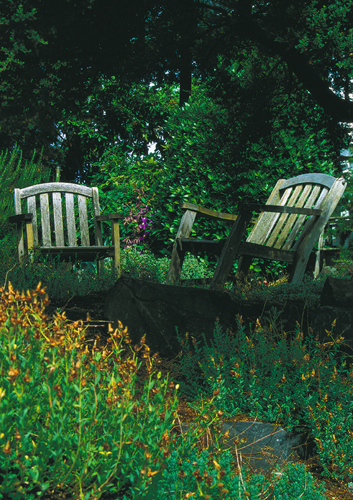Dividing Perennials
By Sheila Rabideaux
Early spring is the optimum time to divide summer and fall blooming perennials. At this time of year plants are exiting dormancy and the gardener can be assured new divisions will be quick to produce new roots and establish themselves.
The emergence of shoot tips from the ground will be the gardener’s first clue that it is time to grab a shovel and spade. Divisions are the easiest and fastest way to vegetatively produce new plant material.
There are three main advantages to dividing plants. First, rapidly spreading perennials need thinning to keep them under control. Second, dividing tired, old plants, results in healthier specimens with more foliage and flowers. And the best reason, extra plant material can be used to fill in empty garden spaces or to share with friends and fellow plant-nuts.
Unless the ground is fairly moist, it is ideal to water the plant 1-2 days before dividing it. Lift the entire root system of the parent plant out of the ground. You will find a sharp spade and garden fork useful during this process. Fibrous rooted perennials, like monardas or asters, can be separated by hand or cut and sawed into pieces. Fleshy rooted plants, like hostas or daylilies, may have to be washed in order to get a good view of their underground structures. Make sure each division includes a piece of crown that has eyes or buds as well as good roots. Tuberous or rhizomatous perennials, like dahlias and cannas, can be sliced with a sharp pruner or knife. If large wounds are created it is recommended to dust with sulfur to decrease losses from disease or insects. The divided plant should be planted immediately at its original depth in prepared soil or potted in a container for later placement. Be sure to water all divisions in well.
Sheila Rabideaux joined our staff as propagator in 2005. With a degree in horticulture from the University of Wisconsin, Madison, she came to Oregon to find work in the wholesale plant industry. When she first visited Joy Creek Nursery, she told us that she wanted to work for us and happily we were able to make that happen. Sheila's passion has been propagating woody plants, especially conifers and viburnums. She also enjoys grafting.
© 2007 Joy Creek Nursery
Labels: gardening, horticulture, Joy Creek, Perennials, plants


0 Comments:
Post a Comment
Subscribe to Post Comments [Atom]
<< Home